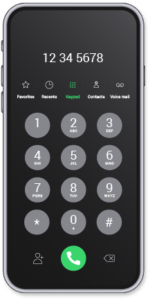User how can trace mobile number location in India
User how can trace mobile number location in India
Tracing the location of a mobile number in India can be a useful task for various reasons, such as ensuring the safety of loved ones, verifying the legitimacy of a caller, or investigating potential fraudulent activities. While tracing the exact location of a mobile number with precision may not always be feasible due to privacy and security concerns, there are several methods and tools available that can provide valuable insights into the general area or region associated with a particular mobile number. In this comprehensive guide, we’ll explore a variety of techniques and resources you can utilize to trace the location of a mobile number in India.
1. Mobile Number Tracker Apps:
Several mobile apps are designed specifically for tracking the location of mobile numbers. These apps often utilize GPS technology and cell tower triangulation to provide real-time or approximate location information. Some popular options in India include:
Truecaller: Besides its caller identification feature, Truecaller also offers a number tracking feature that provides the approximate location of a mobile number.
Mobile Number Locator: This app allows users to track the location of mobile numbers and provides additional features like caller identification.
2. Mobile Operator Services:
Many mobile operators in India offer services that allow subscribers to track the location of their own or their family members’ mobile numbers. These services typically require the installation of a mobile app or the activation of a specific feature. Examples include:
Airtel Family Locator: Airtel offers a family locator service that enables users to track the location of family members’ mobile numbers within India.
Vodafone Idea Location Tracker: Vodafone Idea provides a location tracking service through its mobile app, allowing users to track the location of registered numbers.
3. Online Mobile Tracking Websites:
Several websites provide online tools for tracking the location of mobile numbers. These tools often utilize publicly available data and may offer limited accuracy. Some popular websites for tracking mobile numbers in India include:
MobileNumberTracker.com: This website allows users to track the location of mobile numbers in India by entering the number into the search bar.
IndiaTrace.com: IndiaTrace offers a mobile tracker tool that provides the telecom operator, state, and city information associated with a mobile number.
4. Government Resources:
Government agencies in India may also offer resources for tracing the location of mobile numbers, particularly for law enforcement purposes. While these resources are typically restricted and require proper authorization, they may be utilized in certain situations. Examples include:
Telecom Regulatory Authority of India (TRAI): TRAI regulates the telecommunications sector in India and may have access to data that can assist in tracing mobile numbers.
Law Enforcement Agencies: Local police departments and other law enforcement agencies may have the authority to trace mobile numbers under certain circumstances.
5. Legal Considerations:
When attempting to trace the location of a mobile number, it’s essential to consider legal and ethical implications. Privacy laws protect the personal information of individuals, and unauthorized tracking or surveillance may violate these laws. Always ensure that your methods comply with applicable regulations and respect the privacy rights of others.
Conclusion:
Tracing the location of a mobile number in India can be achieved through various methods and resources, including mobile apps, operator services, online websites, and government resources. While these methods may provide varying levels of accuracy and require proper authorization in certain cases, they can be valuable tools for obtaining location information when needed. It’s crucial to approach mobile number tracking ethically and responsibly, ensuring compliance with legal requirements and respect for privacy rights.




